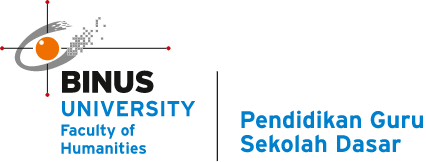Virtual Reality in Education
Introduction
Virtual Reality (VR) has emerged as a powerful tool in education, offering immersive and interactive learning experiences. This article aims to provide a comprehensive analysis of the use of VR in education, drawing on reputable journal articles from the last ten years. The integration of VR in education has the potential to transform traditional teaching methods and enhance student engagement and learning outcomes.
Enhancing Learning Experiences
VR technology provides students with a simulated environment that replicates real-world scenarios, allowing them to engage in hands-on experiences and practice skills in a safe and controlled manner (Jensen & Konradsen, 2017). This immersive learning experience can enhance students’ understanding of complex concepts and improve their problem-solving skills (Durukan et al., 2020). For example, in science education, VR can provide visual and interactive representations of scientific phenomena, allowing students to explore and manipulate objects in a virtual environment (Durukan et al., 2020). This not only enhances their understanding of scientific principles but also fosters a sense of curiosity and exploration (Durukan et al., 2020).
Medical and Health Professions Education
VR has also been extensively used in medical and health professions education. It offers realistic simulations of medical procedures and patient interactions, providing students with valuable training opportunities (Lie et al., 2023). For example, VR simulations can be used to practice surgical techniques, allowing students to develop their skills in a controlled and safe environment (Lie et al., 2023). VR has also been used in nursing education to enhance students’ immersive learning experiences and improve their understanding of complex healthcare scenarios (Lie et al., 2023). These simulations can improve students’ performance in anatomy and physiology tests and enhance their clinical decision-making skills (Moro et al., 2021).
Mathematics and STEM Education
In mathematics education, VR has shown promise in enhancing students’ understanding of mathematical concepts and problem-solving skills (Buchori et al., 2022). Virtual reality-based mathematics learning media can engage students in interactive and immersive mathematical experiences, making abstract concepts more tangible and accessible (Buchori et al., 2022). VR has also been used in geometry education to improve students’ spatial understanding and accuracy in geometric concepts (Buchori et al., 2022). By allowing students to manipulate and visualize geometric shapes in a virtual environment, VR can enhance their spatial reasoning abilities (Buchori et al., 2022).
Challenges and Considerations
While VR offers exciting possibilities for education, there are challenges and considerations that need to be addressed. One challenge is the cost of VR equipment and software, which can be a barrier to widespread implementation (Jensen & Konradsen, 2017). Technical issues, such as motion sickness and discomfort, also need to be addressed to ensure a positive user experience (Jensen & Konradsen, 2017). Additionally, the design and development of VR applications require expertise in instructional design and technology integration (Jensen & Konradsen, 2017). Educators need to be trained in using VR effectively and aligning it with the intended learning outcomes.
Assessment and Evaluation
Assessing student learning in VR environments presents unique opportunities and challenges. VR can provide rich data on students’ interactions and performance, allowing for more authentic and comprehensive assessment (Oyelere et al., 2020). For example, in a virtual laboratory, students’ actions and decisions can be recorded and analyzed to assess their understanding of scientific concepts and their ability to apply them in practical situations (Oyelere et al., 2020). However, the development of valid and reliable assessment methods for VR environments is an ongoing challenge (Oyelere et al., 2020). Researchers and educators need to explore innovative approaches to assess learning in VR and ensure the validity and reliability of the assessment measures.
Future Directions
The use of VR in education is still evolving, and there are many exciting possibilities for future research and development. Further studies are needed to explore the long-term effects of VR on learning outcomes and retention of knowledge (Jensen & Konradsen, 2017). Additionally, the integration of VR with other emerging technologies, such as artificial intelligence and big data, can further enhance the learning experience (Yin & Tsai, 2021). The development of more affordable and accessible VR technologies will also contribute to the widespread adoption of VR in education (Jensen & Konradsen, 2017). As VR continues to advance, it is essential for educators and researchers to stay updated on the latest developments and best practices in using VR for educational purposes.
Conclusion
Virtual Reality has the potential to revolutionize education by providing immersive and interactive learning experiences. It offers opportunities for students to engage in hands-on activities, explore complex concepts, and develop critical thinking and problem-solving skills. VR has been successfully applied in various fields, including science, medicine, mathematics, and STEM education. However, challenges such as cost, technical issues, and the need for expertise in instructional design and technology integration need to be addressed. Ongoing research and development are necessary to explore the full potential of VR in education and ensure its effective implementation. By harnessing the power of VR, educators can create engaging and transformative learning experiences for students, preparing them for the challenges of the digital age.
References
- Jensen, L. X. and Konradsen, F. (2017). A review of the use of virtual reality head-mounted displays in education and training. Education and Information Technologies, 23(4), 1515-1529. https://doi.org/10.1007/s10639-017-9676-0
- Durukan, A., Artun, H., & Temur, A. (2020). Virtual reality in science education: a descriptive review. Journal of Science Learning, 3(3), 132-142. https://doi.org/10.17509/jsl.v3i3.21906
- Lie, S. S., Helle, N., Sletteland, N. V., Vikman, M. D., & Bonsaksen, T. (2023). Implementation of virtual reality in health professions education: scoping review. JMIR Medical Education, 9, e41589. https://doi.org/10.2196/41589
- Moro, C., Birt, J. R., Štromberga, Z., Phelps, C., Clark, J., Glasziou, P., … & Scott, A. M. (2021). Virtual and augmented reality enhancements to medical and science student physiology and anatomy test performance: a systematic review and meta‐analysis. Anatomical Sciences Education, 14(3), 368-376. https://doi.org/10.1002/ase.2049
- Buchori, A., Prasetyowati, D., & Wijayanto, .. (2022). Design of virtual lab geometry using virtual to supplement learning in mathematics classes. KnE Social Sciences. https://doi.org/10.18502/kss.v7i19.12464
- Oyelere, S. S., Kaliisa, R., Obaido, G., Yunusa, A. A., & Jimoh, E. R. (2020). Exploring the trends of educational virtual reality games: a systematic review of empirical studies. Smart Learning Environments, 7(1). https://doi.org/10.1186/s40561-020-00142-7
- Yin, Z. and Tsai, S. (2021). Research on virtual reality interactive teaching under the environment of big data. Mathematical Problems in Engineering, 2021, 1-11. https://doi.org/10.1155/2021/7980383



